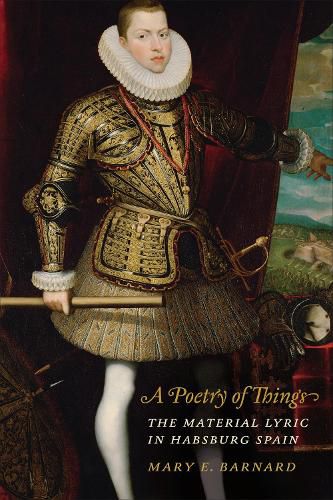Readings Newsletter
Become a Readings Member to make your shopping experience even easier.
Sign in or sign up for free!
You’re not far away from qualifying for FREE standard shipping within Australia
You’ve qualified for FREE standard shipping within Australia
The cart is loading…






A Poetry of Things considers how cultural objects were used by poets in the years around 1600 - a time of social and economic crisis, but also of remarkable artistic and literary production.
A Poetry of Things examines the works of four poets whose use of visual and material culture contributed to the remarkable artistic and literary production during the reign of Philip III (1598-1621). Francisco de Quevedo, Luis de Gongora, Juan de Arguijo, and Luisa de Carvajal y Mendoza cast cultural objects - ranging from books and tombstones to urban ruins, sculptures, and portraits - as participants in lively interactions with their readers and viewers across time and space.
Mary E. Barnardargues that in their dialogic performance, these objects serve as sites of inquiry for exploring contemporary political, social, and religious issues, such as the preservation of humanist learning in an age of print, the collapse of empires and the rebirth of the city, and the visual culture of the Counter-Reformation. Her inspired readings explain how the performance of cultural objects, whether they remain in situ or are displayed in a library, museum, or convent, is the most compelling.
$9.00 standard shipping within Australia
FREE standard shipping within Australia for orders over $100.00
Express & International shipping calculated at checkout
A Poetry of Things considers how cultural objects were used by poets in the years around 1600 - a time of social and economic crisis, but also of remarkable artistic and literary production.
A Poetry of Things examines the works of four poets whose use of visual and material culture contributed to the remarkable artistic and literary production during the reign of Philip III (1598-1621). Francisco de Quevedo, Luis de Gongora, Juan de Arguijo, and Luisa de Carvajal y Mendoza cast cultural objects - ranging from books and tombstones to urban ruins, sculptures, and portraits - as participants in lively interactions with their readers and viewers across time and space.
Mary E. Barnardargues that in their dialogic performance, these objects serve as sites of inquiry for exploring contemporary political, social, and religious issues, such as the preservation of humanist learning in an age of print, the collapse of empires and the rebirth of the city, and the visual culture of the Counter-Reformation. Her inspired readings explain how the performance of cultural objects, whether they remain in situ or are displayed in a library, museum, or convent, is the most compelling.